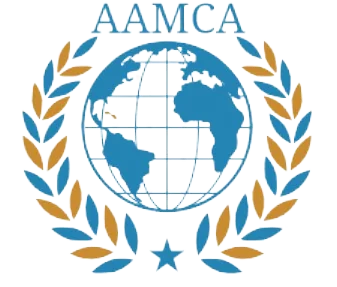The Deadly Nature of Tsunamis
Tsunamis are a series of ocean waves caused by large disturbances such as underwater earthquakes, volcanic eruptions, or landslides. Unlike typical waves generated by wind, tsunami waves can travel at extraordinary speeds, reaching up to 500 to 600 miles per hour in deep water. As they approach shallow coastal areas, these waves drastically increase in height and can result in devastating impacts on coastal communities.
Historically, tsunamis have been responsible for catastrophic loss of life and widespread destruction. The 2004 Indian Ocean tsunami stands as one of the most catastrophic natural disasters in recorded history. Triggered by a massive undersea earthquake measuring 9.1 on the Richter scale near Sumatra, this catastrophic event unleashed waves that struck the coasts of multiple countries, including Indonesia, Thailand, and Sri Lanka. The result was a death toll exceeding 230,000 individuals and the displacement of millions more, highlighting the sheer destructive power held within these oceanic waves.
The rarity of tsunamis can create a false sense of security for coastal populations. However, since the destructive forces of these ocean waves can occur with little to no warning, preparedness is essential. The combination of the potential for widespread devastation and the unpredictable nature of these disasters emphasizes why communities must develop effective tsunami preparedness plans. This includes creating early warning systems, conducting regular drills, and educating citizens about evacuation routes and safety measures. By acknowledging the unprecedented and deadly potential of tsunamis, communities can take proactive steps to safeguard lives and property against the fury of the ocean.
The Evolution of Early Warning Systems
The devastation caused by the 2004 Indian Ocean tsunami underscored the critical need for effective early warning systems to mitigate the impacts of future tsunami occurrences. In the years following this disaster, global efforts have intensified to enhance tsunami preparedness through technological innovation and collaborative international initiatives. It has become increasingly clear that a robust early warning system is indispensable for saving lives and minimizing property damage when a tsunami strikes.
One of the significant advancements has been the establishment of the Tsunami Warning Centers, which utilize a network of seismic monitoring stations and ocean buoys. These centers analyze data from seismic events and monitor oceanic changes that could indicate an impending tsunami. For instance, the Pacific Tsunami Warning Center (PTWC) plays a pivotal role in providing alerts to countries in the Pacific region. The integration of satellite technology has also improved the ability to detect changes in sea level, allowing for quicker and more accurate assessments.
International collaboration has further bolstered these systems, as seen in the development of the Indian Ocean Tsunami Warning System (IOTWS). This initiative brings together numerous countries to share data and resources, fostering a sense of collective responsibility toward tsunami preparedness. Recent incidents, such as the earthquake near Russia in 2023, exemplify the effectiveness of these systems. Following the seismic event, timely alerts were disseminated, allowing nearby coastal populations to evacuate ahead of any potential tsunami, thereby safeguarding lives.
Furthermore, public awareness campaigns have complemented technological progress, ensuring communities understand evacuation procedures and safety protocols. This comprehensive approach to early warning systems from technical, governmental, and community perspectives is crucial for effective tsunami response. The evolution of these systems reflects a growing commitment to protecting vulnerable coastal regions around the globe.
The Need for Continued Investment
The challenges associated with disaster preparedness continue to evolve, necessitating consistent investment in innovative solutions. One of the most pressing issues facing coastal regions is the impact of rising sea levels coupled with an increase in the number of residents living in vulnerable areas. This scenario amplifies the urgency for effective tsunami preparedness, particularly through the enhancement of early warning systems. In this context, the United Nations initiative, ‘Early Warnings for All,’ has emerged as a pivotal framework aimed at establishing comprehensive, reliable warning systems globally by the year 2027.
The ‘Early Warnings for All’ initiative recognizes that efficient warning systems can significantly mitigate the effects of tsunamis, saving lives and reducing economic losses. By fostering international cooperation, this program aims to equip all nations with the technological capabilities and financial resources necessary to implement these essential solutions. Sustainable investments in technology and infrastructure are crucial for maintaining robust early warning systems that can effectively alert communities to imminent dangers, particularly as environmental conditions continue to change.
Financial and technological support from nations around the world is essential to ensure the resilience of these systems. This support includes not only funding for the development of advanced monitoring technologies but also training for local communities to understand and respond to warnings appropriately. Collaboration among governments, NGOs, and the private sector will play a significant role in advancing tsunami preparedness initiatives. As coastal populations grow, the need for preparedness becomes even more critical. Ensuring that countries prioritize investments in early warning systems will be fundamental to protecting lives and property from the devastating effects of tsunamis in the future.
A Call to Action for Global Preparedness
Tsunamis, which are powerful waves generated by underwater disturbances such as earthquakes, volcanic eruptions, or landslides, pose significant threats to coastal communities worldwide. The devastation wrought by past tsunamis serves as stark reminders of the need for collective action in enhancing tsunami preparedness. To mitigate the risks associated with these natural disasters, both individuals and local governments must prioritize proactive measures that can save lives and safeguard property.
Community engagement is paramount in building a robust tsunami preparedness framework. Local authorities ought to organize educational initiatives designed to inform residents about the signs of an impending tsunami, evacuation routes, and emergency procedures. By fostering a culture of awareness, communities can empower individuals to act swiftly and effectively in the event of a tsunamic threat. School programs, public workshops, and emergency drills can instill critical knowledge that will prepare citizens to respond adequately under pressure.
Moreover, the collaboration between communities and local governments is essential in developing clear warning systems and improving infrastructure. Coastal waterfronts should feature accessible and visible evacuation signage, alongside regular maintenance checks to ensure that escape routes remain clear and navigable. Disaster preparedness plans should be frequently updated, and community members encouraged to participate in these evaluations to adapt to new challenges posed by our changing environment.
Recognizing World Tsunami Awareness Day serves as an ideal opportunity for a renewed commitment to tsunami preparedness. It is a time to respect the power of the ocean and acknowledge that through sufficient preparation and resilience, we have the ability to protect lives and communities. Encouraging active participation and continued education within local populations fosters a sense of shared responsibility that is critical to effective tsunami response and safety for all. In doing so, we not only safeguard our own communities but also contribute to global efforts in disaster risk reduction.




